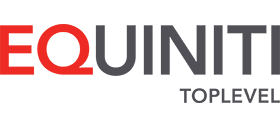Q. What’s your role at Equiniti Toplevel and what does it involve?
A. I’m Head of Software which sees me responsible for product ownership over Outreach, our case management platform, and Open Design Studio, the suite of tools which enable our clients to build and secure web based services and processes. I also manage the R&D team which is responsible for further developing these. We monitor market developments and use our initiative to see where the design needs to be headed but we also listen closely to customer feedback to see how they would like to use the software going forward.
Q. What’s your background and what skills do you utilise in your job?
A. I started out working on avionics software but for the last 20+ years I’ve been working in the development and distribution of software design tools and Business Process Management (BPM) software. I joined Toplevel in August 2016, just after the Equiniti acquisition, but have already been able to draw upon my previous experience to help the solution adapt. I’m enjoying being able to guide the future development of Toplevel’s products both in terms of the product shape and features and also the way our talented team works to develop them.
Q. What have been the high points during your time with the company?
A. It’s been fantastic to be involved at the tail end of the recent drive to move our case management design tools into the Cloud. We transitioned a series of desktop tools into what is now the Open Design Studio web application. This was no small achievement, taking a year to accomplish due to the complexity of ensuring the tools were completely cloud-based. Tactically, it will really enable our own Solutions team, as well as those of our clients who are building their own systems on Outreach, to collaborate more easily and work in an environment which is more familiar to them.
Q. What’s your favourite product feature and why?
A. So many to choose from, but from a technical point of view the separation between publicly accessible and case worker pages that the Dual Zone capability provides has to be at the top of the list. That’s really unique in the market. It’s not something I’ve come across before and really helps our clients to ensure that the risk of data theft or aggregation is further minimised. From a usability point of view, if you want to quickly build systems with complex validation without worrying about form layout and so on, the new Forms Digitiser and Process Modeller are easy to pick up and provide a great solution.
Q. How do you see technology changing in the public sector over the course of the next year?
A. There’s a real push towards the Cloud in all sectors at the moment but G-Cloud 9 is further emphasising this for our public sector clients. Public sector organisations we’ve not previously engaged with will now be looking to rollout citizen-centric end-to-end services as part of the drive towards digital transformation, while those of our customers who build their own solutions will be quick to recognise the benefits afforded by migration to the cloud hosted Open Design Studio, for instance. We’re really well placed to exploit this move to the Cloud as my colleagues in our Technical Services team manage a highly secure hosting solution, while the cloud-hosted Open Design Studio enables our existing clients to work fully in the cloud without the need to install smart client tools.
Q. What opportunities do you see in other fields for the adoption of low code solutions?
A. Other regulated sectors such as finance are a good fit for our highly secure, yet low-code, rapid deployment solutions. The concept is now really coming into its own. There’s a realisation that companies have to change and be more responsive, and that means moving away from the idea that software can only be managed by technical teams. It’s an exciting time to be in the industry because low-code finally provides the market with intuitive solutions that put the power back into the hands of the user.
